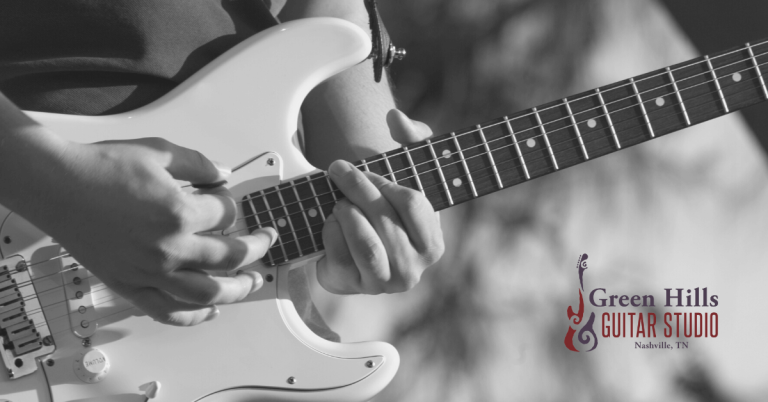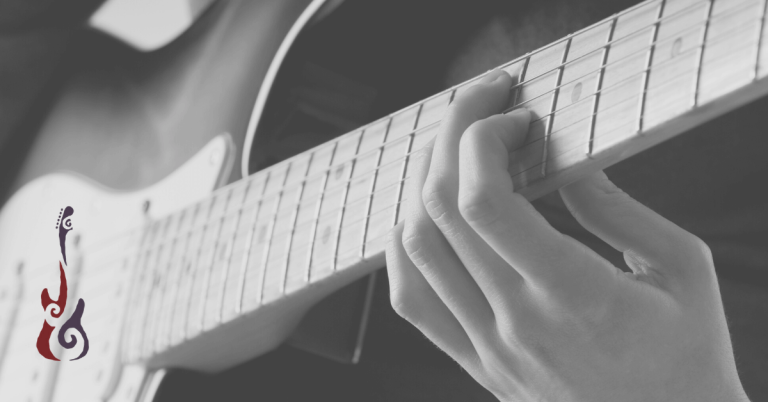Fingerstyle Guitar Techniques and Styles
Are you interested in the world of fingerpicking guitar? You’ve landed in the right spot! This guide is your gateway to learning the history and fundamentals of fingerstyle guitar.
While many guitarists gravitate towards playing the guitar with a pick, a whole new sonic palette awaits those who learn fingerstyle playing. Acoustic guitars, in particular, resonate beautifully with fingerstyle techniques, often yielding rich tones and textures.
Whether you’re just starting out or a seasoned player, this guide is your entry point into the captivating world of fingerstyle guitar. We’ll explore its rich history, versatile techniques, diverse styles, and valuable resources, empowering you to unlock your musical potential and unleash your creativity.
Let’s dive in!
A Brief History of Fingerstyle Guitar
Fingerstyle guitar technique boasts a rich historical lineage, drawing from diverse cultural and musical traditions. Its origins can be traced back to classical guitar playing, where intricate finger movements were employed to articulate melodic lines and harmonies. This classical influence laid the groundwork for developing fingerstyle techniques across various genres.
In folk music traditions, particularly in regions like Appalachia and the American South, fingerstyle guitar became synonymous with storytelling and conveying emotions. Pioneering musicians like the Carter Family popularized fingerpicking styles that combined rhythmic bass patterns with melodic embellishments, paving the way for the evolution of country and folk fingerstyle guitar.
The blues also significantly shaped fingerstyle technique, with early blues guitarists adapting fingerpicking to emulate the genre’s syncopated rhythms and expressive phrasing. Artists such as Robert Johnson, Blind Blake, and Mississippi John Hurt pioneered intricate fingerstyle arrangements that blurred the lines between rhythm and melody.
Exploring the Diversity of Fingerstyle Guitar
Fingerstyle playing on the guitar encompasses various techniques and styles, each offering unique approaches to producing music.
Below are just a few examples of the diverse styles and techniques used in fingerstyle guitar playing. Each style offers unique challenges and opportunities for creative expression, making fingerstyle guitar a rich and rewarding musical pursuit.
Classical Fingerstyle
This style is rooted in classical guitar traditions and emphasizes precise finger movements to articulate melodies, harmonies, and bass lines. Classical fingerstyle often involves intricate fingerpicking patterns and utilizes techniques such as rest strokes and free strokes to achieve clarity and expression.
Folk Fingerstyle
Popularized in folk music traditions, folk fingerstyle focuses on storytelling and emotional expression through acoustic guitar playing, often using open-position chords. This style incorporates rhythmic strumming patterns, alternating bass notes, and melodic embellishments to create dynamic arrangements. Fingerstyle folk guitarists often draw inspiration from traditional ballads, country blues, and Americana music.
Country Blues Fingerstyle
Rooted in the blues genre, blues fingerstyle playing is characterized by its soulful expression, syncopated rhythms, and improvisational flair. Blues guitarists employ techniques such as alternating bass patterns, slide guitar, and bent notes to evoke the expressive qualities of the blues. Fingerstyle blues often feature intricate arrangements that blend rhythmic grooves with melodic improvisation.
Contemporary Fingerstyle
This versatile style encompasses many musical genres, including pop, rock, jazz, and world music. Contemporary fingerstyle players draw from diverse influences and incorporate innovative techniques such as percussive tapping, harmonics, and chord melody arrangements. Contemporary fingerstyle guitarists often experiment with unconventional tunings (such as DADGAD) and explore the instrument’s full sonic potential. Check out Andy McKee for some stellar examples of the possibilities of fingerstyle guitar.
Country Fingerstyle (hybrid picking)
Originating in country and bluegrass music, country fingerstyle playing emphasizes fast-picking patterns, virtuosic techniques, and intricate licks. Country guitarists use flatpicks or bare fingers to execute rapid-fire runs, double stops, and pedal steel-inspired bends. Country fingerstyle often features driving rhythms and energetic solos that showcase the guitarist’s technical prowess. This style is often referred to as hybrid picking.
American Primitive Fingerstyle
This genre, pioneered by artists like John Fahey, blends folk, blues, and avant-garde influences to create atmospheric and experimental guitar music. American primitive fingerstyle is characterized by its open tunings, drone notes, and unconventional fingerpicking patterns. Guitarists in this style prioritize raw emotion and sonic experimentation, often incorporating improvisation and freeform composition elements.
The Trials and Triumphs of Learning Fingerstyle Guitar Technique
Learning fingerstyle guitar technique provides many advantages, such as improved finger agility, coordination, and musical expressiveness. By refining each finger’s ability to pluck individual strings, you can gain mastery over dynamics and articulation, enabling nuanced musical interpretation.
Yet, mastering fingerstyle presents its own set of challenges. Developing finger independence demands consistent practice and patience. Moreover, tackling intricate arrangements while maintaining rhythmic precision can prove daunting, especially for beginners.
As with learning any new skill or technique, it pays to be patient and persistent!
Fingerstyle Guitar Fundamentals
Establishing a solid foundation in fingerstyle guitar technique is essential for unlocking your full musical potential and ensuring a fulfilling playing experience. Whether you’re a beginner embarking on your musical journey or an experienced guitarist seeking to refine your skills, learning the fundamentals of fingerstyle technique lays the groundwork for expressive and seamless playing.
Proper Hand Positioning and Technique
- Begin by lightly resting the outer edge of your palm on the guitar bridge for optimal hand positioning.
- Maintain a relaxed wrist and allow your arm to rest naturally on the guitar body.
- Keep fingers close to the strings for smooth movement and accurate plucking.
Exercises for Development
Incorporate exercises such as scales, arpeggios, and rhythmic patterns into your practice routine to develop finger independence and control. Start at a comfortable tempo and gradually increase the speed as you become more proficient. Challenging sequences can improve agility and accuracy, allowing you to tackle complex arrangements confidently.
Check out this video from Green Hills Guitar Studio instructor Sam Farkas to learn how to start with fingerstyle guitar. He discusses hand positioning, important considerations, and an excellent exercise.
Advanced Techniques
Advanced fingerstyle techniques add depth and complexity to musical arrangements. Arpeggios, where individual notes of a chord are played sequentially, create lush harmonies and melodic movement. Double stops, hammer-ons, pull-offs, and slides introduce embellishments and ornamentation, enriching the musical texture.
These techniques find application across various genres, from classical to blues to contemporary fingerstyle arrangements. Experimenting with different techniques and incorporating them creatively into compositions expands the guitarist’s repertoire of musical expression.
The Art of Arranging
Fingerstyle guitar playing can greatly enhance the ability of singer-songwriters or solo accompanists to create more nuanced arrangements in several ways:
- Expressive Accompaniment: Fingerstyle techniques allow for greater control over dynamics, texture, and articulation. This enables singer-songwriters to craft accompaniments that complement and enhance the mood and emotion of their songs, adding depth and richness to their performances.
- Melodic Embellishments: Fingerstyle guitarists can weave intricate melodies and embellishments into their accompaniments, adding layers of interest and complexity to their arrangements. These melodic flourishes can help elevate the song’s overall musicality and captivate the listener’s attention.
- Harmonic Depth: Fingerstyle guitar playing often involves intricate chord voicings and harmonies, allowing singer-songwriters to create more sophisticated harmonic arrangements. By incorporating rich and varied chord progressions or chord melodies, they can add depth and color to their songs, enhancing their musical impact.
- Rhythmic Variability: Fingerstyle techniques offer many rhythmic possibilities, from gentle arpeggios to percussive tapping patterns. This rhythmic flexibility allows singer-songwriters to explore different rhythmic textures and grooves, adding interest and dynamics to their arrangements.
- Versatility Across Genres: Fingerstyle guitar playing is not limited to any particular genre, making it a versatile tool for singer-songwriters working in diverse musical styles. Whether crafting intimate folk ballads, soulful blues tunes, or intricate pop compositions, fingerstyle techniques can adapt to suit the song’s needs, allowing for greater creative expression.
Overall, fingerstyle guitar playing empowers singer-songwriters to create more nuanced and expressive arrangements that elevate their music to new heights. By learning the techniques and principles of fingerstyle guitar, you can unlock a world of creative possibilities and enrich your musical storytelling.
20 Song Suggestions for Further Listening and Learning
Expanding your repertoire is crucial for honing fingerstyle skills and broadening your musical horizons. Here are some well-known pieces across various genres to enrich your fingerstyle guitar practice:
- “Blackbird” by The Beatles
- “Jolene” by Dolly Parton
- “Fast Car” by Tracy Chapman
- “Classical Gas” by Mason Williams
- “Tears In Heaven” by Eric Clapton
- “Dust in the Wind” by Kansas
- “Landslide” by Fleetwood Mac
- “Don’t Think Twice, It’s All Right” by Bob Dylan
- “Over the Rainbow” by Israel Kamakawiwo’ole (fingerstyle arrangement)
- “Shape of My Heart” by Sting
- “Fire and Rain” by James Taylor
- “Sweet Home Chicago” by Robert Johnson
- “Stop this Train” by John Mayer
- “Drifting” by Andy McKee
- “Hallelujah” by Leonard Cohen (arranged by Jeff Buckley)
- “Recuerdos de la Alhambra” by Francisco Tárrega
- “Hey There Delilah” by Plain White T’s
- “First Day of My Life” by Bright Eyes
- “The Sound of Silence” by Simon & Garfunkel
- “Nothing Else Matters” by Metallica
Additional Tips and Insights
As someone who has navigated the journey of mastering fingerstyle guitar technique, I’ve found that consistency and perseverance are paramount. Establishing a regular practice routine and setting achievable goals help maintain momentum and motivation.
Drawing inspiration from diverse musical influences and embracing challenges as opportunities for growth fosters artistic development.
Experimenting with different fingerstyle patterns and techniques encourages creativity and expands musical vocabulary. Remember to enjoy the process and celebrate progress along the way. With dedication and passion, learning fingerstyle guitar technique is a rewarding and fulfilling endeavor.
The Coda
As you continue exploring fingerstyle guitar, remember there’s always room to grow. With dedication and practice, you’ll refine your skills and expand your musical repertoire.
Whether you’re just starting or looking to improve, Green Hills Guitar Studio offers personalized lessons to help you reach your goals. Contact us today for guitar lessons in Nashville or online.
Let’s elevate your fingerstyle guitar playing together.







